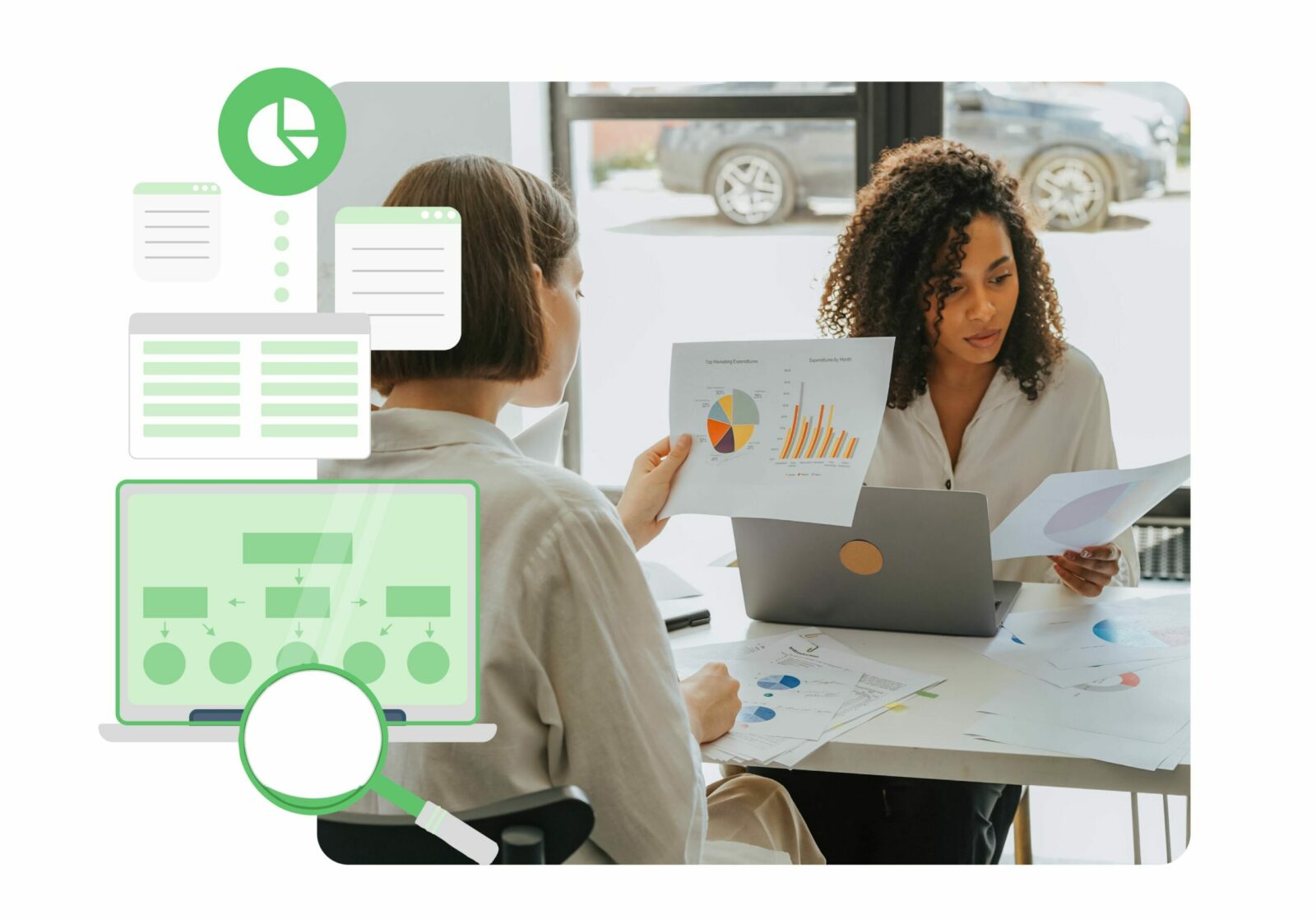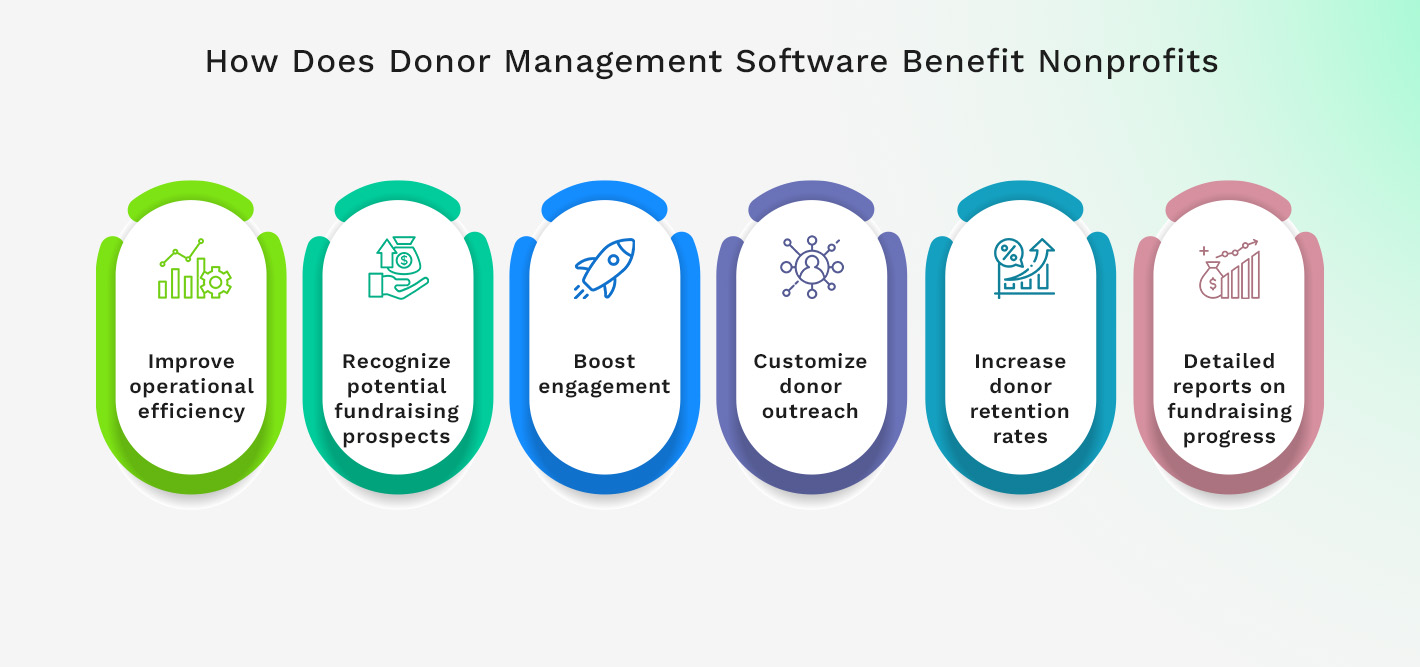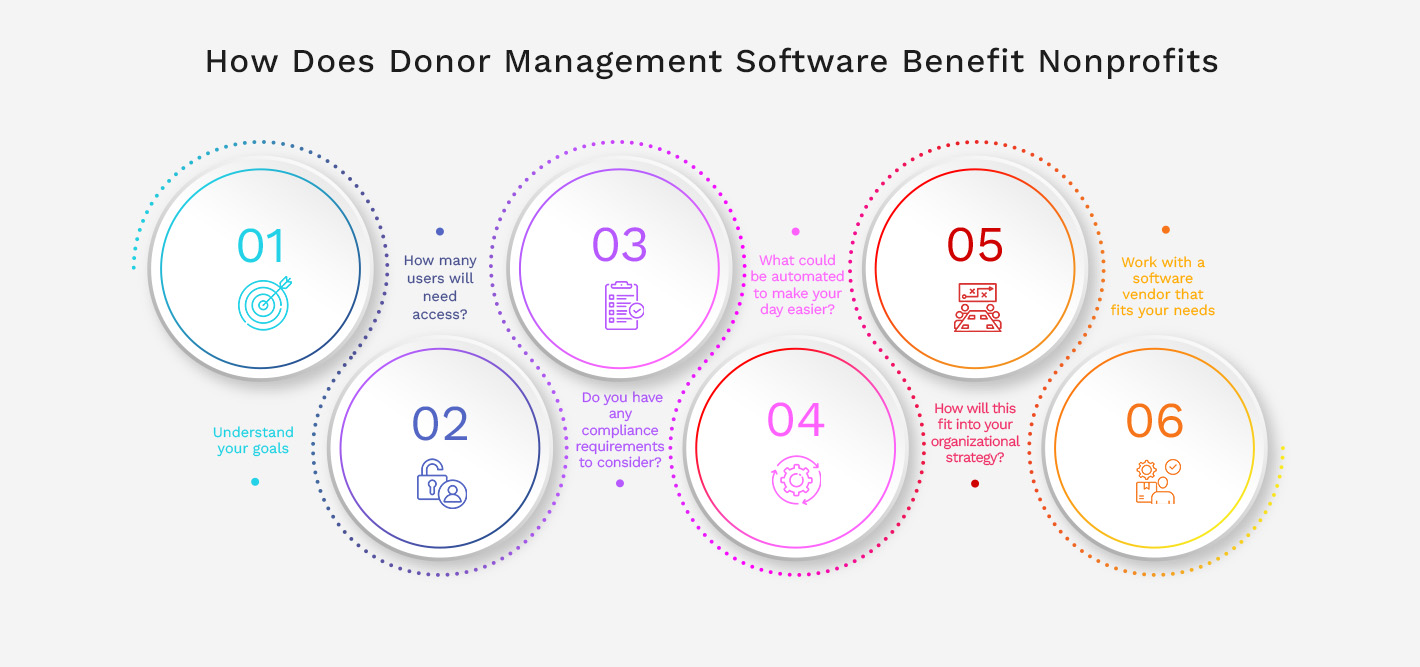Imagine running a nonprofit and finding yourself lost in sheets of donor data, wondering how to identify and engage with your most important contributors. This is where donor management software (DMS) can help.
This post explains donor management software and the benefits it can offer your organization. And if you're considering developing one tailored to your needs, you'll learn how to create a powerful tool that aligns with your goals.
We'll buid your first application for you. At no extra cost.
Let us build your first business application for free. Go from an idea to an application in under 2 weeks.

What Is Donor Management Software?
Donor management software (DMS) is a technological solution for nonprofit organizations. It manages donor information to help cultivate and improve relationships with donors. DMS can also help solicit, collect, track, and analyze contributions from supporters. The DMS market was valued at $1.3 billion in 2023 and is expected to reach $3.3 billion by the end of 2030.
Besides organizing data, donor management software provides insight into donation trends and habits. These can significantly improve your fundraising efforts, increase engagement, and encourage donations from current and potential donors.
DMS acts as a centralized hub for all donor-related activities. It lowers fundraising costs and ensures that more of the funds raised are channeled toward your organization's mission.
Using donor management software with complementary tools such as non-profit fundraising software, non-profit CRM software, and donor prospect research software can help nonprofits offer rich experiences across the board.
Benefits of Donor Management Software for Nonprofits
Donor management software offers tools for nonprofits to track and engage with their supporters efficiently. It simplifies managing donations, consolidates donor information, and streamlines communication efforts. Here are the most important benefits it offers.
Improve operational efficiency
Automating routine tasks like donor acknowledgment emails, tax receipting, gift processing, and data entry reduces the time and effort spent on administrative tasks. Instead of being caught up in paperwork, you can devote more time to high-impact activities like engaging with donors and strategizing for future campaigns.
The software's ability to integrate with other tools and platforms streamlines operations, saving costs and reducing the chance of human error. The software also centralizes information, ensuring easy access to donor data and facilitating decision-making.
Recognize potential fundraising prospects
Leveraging data analytics allows organizations to identify patterns and signals that indicate a donor's likelihood to give more. DMS sifts through historical giving data, links donor interests to specific campaigns, and scores donors based on their engagement so you can prioritize outreach to those who demonstrate the greatest potential for increased support.
This data-driven approach helps you create a more strategic fundraising plan and ensures that your efforts are concentrated on the most promising opportunities.
Boost engagement
Understanding each donor's journey and interaction with your nonprofit enables you to craft messages that resonate on a personal level, fostering stronger connections.
The software's ability to track engagement metrics like email opens, event attendance, and social media interactions lets you fine-tune your outreach initiatives. Instead of sending out a one-size-fits-all message, you create touchpoints that resonate with your audience.
When donors feel heard and valued, they're more likely to maintain their commitment to your cause and become lifelong advocates.
Customize donor outreach
Using the segmentation tools in donor management software allows you to divide your donor base into meaningful groups based on their giving history, interests, and behavior. This enables you to send targeted and relevant communications, increasing the effectiveness of your outreach efforts.
When donors feel connected to your cause in a way that's special to them, they are more likely to act, whether by making more donations, sharing your mission on social media, or volunteering.
Increase donor retention rates
The average donor retention rate for nonprofits is about 40-45%. This means that out of every 100 donors who contribute to your organization, only about 40 will make a donation again the following year.
DMS offers tools like "set-it-and-forget-it" monthly giving programs that allow donors to commit to ongoing support, which increases retention easily. When your nonprofit regularly engages donors with sincere, relevant updates and recognition, they will likely stick around.
Detailed reports on fundraising progress
Donor management software provides comprehensive reports to gauge what's working and what needs adjustment in your fundraising approach. Capabilities such as generating reports on campaign performance, donor segmentation analysis, and fund allocation offer a panoramic view of your fundraising efforts. Visual tools like charts and graphs in these reports make the data easily digestible, ensuring that you and your team can make data-driven decisions.
Customizable reporting features also allow you to monitor specific metrics relevant to your goals, while the option to schedule automatic report generation and delivery keeps everyone in the loop. When it's time for board meetings or stakeholder updates, this feature enables you to share progress and insights effortlessly.

How to Build Donor Management Software?
This section will outline the essential stages of building a DMS, from initial planning and design to development and implementation, ensuring your software meets your organization's specific needs.
1. Understand your goals
Think about what you want to achieve with your fundraising and donor management efforts. Do you want to grow your donor base, improve engagement levels, increase donation amounts, or improve operational efficiency?
Each nonprofit has a unique mission and operates differently, so your goals should reflect your organization's vision and the outcomes you expect. These goals should be SMART - Specific, Measurable, Achievable, Relevant, and Time-bound.
Clearly defining your objectives will directly influence the functionality and features of your donor management software, ensuring that it provides the support necessary to meet your targets.
2. How many users will need access?
Determining how many team members will need access directly impacts the type of licensing you'll opt for and the software's cost. Some platforms offer pricing structures based on the number of users, while others provide unlimited user access.
Think about your staff, volunteers, and the board members who might require access to donor information. Also, think about the level of access each user will need. Are some team members only viewing the data while others are entering it? Will you have administrators who need to manage accounts and permissions?
Answering these questions will help you understand the scalability and user permission features your software should offer.
3. Do you have any compliance requirements to consider?
Compliance requirements are non-negotiable when handling sensitive donor information. Nonprofits must adhere to different legal standards, such as the General Data Protection Regulation (GDPR) in Europe, the Health Insurance Portability and Accountability Act (HIPAA) in the US health sector, and, sometimes, specific local data protection laws.
Consider these regulations when creating your DMS to ensure that your solution is legally compliant. This includes data security features, donor privacy, and opt-in and opt-out mechanisms in your communication strategies. Ensuring compliance allows you to protect donors' data and build trust among your supporters.
4. What could be automated to make your day easier?
Define which routine and predictable tasks can be automated with DMS to lighten your team's workload. Routine thank-you emails, tax receipts, donation acknowledgments, and data entry tasks are examples of automatable activities. Automating these tasks improves consistency and accuracy while freeing staff time for more strategic work.
When considering what to automate, think about your donors' journey and your typical operational needs. Look for the trigger points where automation can ensure timely interaction without manual input. This can be sending donation prompts ahead of special occasions or a series of welcome emails as part of the onboarding process for new donors.
5. How will this fit into your organizational strategy?
Creating donor management software needs to complement and support your broader goals. These include expanding your reach, improving donor relationships, or increasing fundraising efficiency.
Consider how the software will support your mission and help you execute immediate and long-term initiatives. The system should increase your ability to track progress, report on success metrics, and identify opportunities for improvement. It should also be adaptable to the changes in your organization and the nonprofit sector.
6. Work with a software vendor that fits your needs
Select a vendor that delivers a robust, feature-rich platform and aligns with your organization's values. Evaluate potential vendors based on their experience with nonprofits similar to yours, the flexibility of their platform, the quality of customer support, and their ability to provide a scalable solution that grows with your organization.
A good vendor should offer comprehensive training and resources to ensure your team can make the most of the software and robust customer support to help troubleshoot any issues that arise.

Build Your Donor Management Software With Kohezion
If you're ready to develop bespoke donor management software, Kohezion offers a customizable, user-friendly platform that can be tailored to your nonprofit’s specific needs. With Kohezion, you can manage your donor database seamlessly, engage with your supporters effectively, and easily track every interaction, all in one place.
Kohezion helps you design a system that manages donations, assists in executing targeted campaigns, and analyzes their success. You'll have a partner who ensures your software solution integrates perfectly with existing tools like Salesforce and Mailchimp, increasing donor engagement.
Whether you're transitioning from spreadsheets or upgrading from another system, Kohezion's team is ready to help you create a donor management solution that makes managing your nonprofit's relationships simple and powerful.
Conclusion
Donor management software streamlines nonprofit operations, deepens donor relationships, and fosters a more informed fundraising approach. Building a donor management system isn't easy. It requires foresight, strategic planning, and a firm understanding of your organization's aspirations.
With a clear understanding of your goals, the scope of user access, compliance considerations, potential for automation, strategic fit, and the right software vendor, you can create a system that meets the current demands and scales to your evolving needs.
Start building with a free account
Frequently Asked Questions
Donor Management Software focuses on nurturing relationships with donors, tracking their interactions, and managing their information. Donation Software is primarily concerned with processing donations. Donor Management helps understand and engage your supporters, while Donation Software allows you to collect their contributions. Both are important but serve different aspects of nonprofit fundraising.
Donor Management Software is utilized by nonprofit organizations of different sizes and missions. This includes charities, educational institutions, religious groups, and advocacy groups. It helps these organizations streamline their fundraising efforts, manage donor information, and cultivate lasting relationships with their supporters. Any group seeking to track and engage its donor base effectively can benefit from using Donor Management Software.
The "best" donor management software varies depending on your nonprofit's needs and goals. However, top contenders often include platforms like Kohezion, Bloomerang, Salesforce Nonprofit Success Pack, and Kindful due to their robust features, ease of use, and excellent customer support.
The price range for Donor Management Software starts at $20 per month for basic plans suitable for small organizations. It reaches several hundred dollars a month for more advanced features catering to larger nonprofits.
Factors influencing price include the number of records, the scope of features, and the level of customization required. Some vendors also offer free versions or free trials, allowing you to test the software before committing.
You can manage donors without Donor Management Software using spreadsheets or manual methods. However, this is often less efficient and doesn’t offer the same level of insight or ease of use as specialized software. These manual methods can limit your ability to effectively engage donors, analyze donation data, and streamline fundraising efforts, especially as your nonprofit grows.

